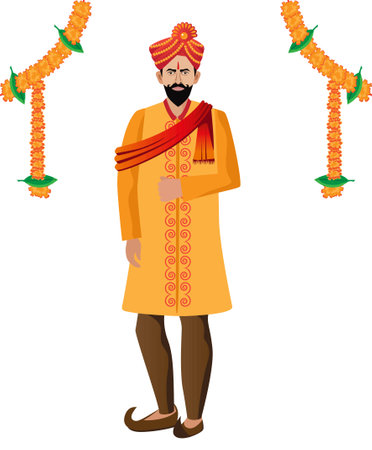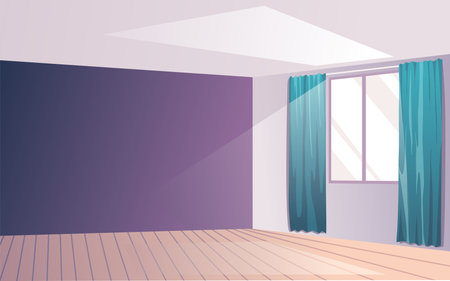Introduction to the Significance of Colours in Indian Culture
India is a land where colours are not just visual elements but carry profound cultural, spiritual, and emotional significance. From vibrant festivals like Holi and Diwali to the daily rituals performed in homes and temples, the use of colours permeates every aspect of Indian life. Each hue has its own symbolism, representing concepts such as prosperity, purity, energy, and harmony. In Indian society, colours are carefully chosen for clothing, home décor, wedding ceremonies, and religious events to invoke positive energies and auspiciousness. This deep-rooted reverence for colour is evident in traditional art forms, rangoli designs adorning thresholds, and even in the selection of spices and flowers used during pujas. For generations, Indians have believed that surrounding oneself with the right colours can attract good fortune, foster mental well-being, and maintain balance within both the household and the wider community. Understanding these colourful traditions offers valuable insight into how positivity is cultivated through thoughtful choices that blend aesthetics with spiritual intention.
Traditional Colours and Their Spiritual Meanings
Colours hold immense significance in Indian culture, with each shade symbolising unique aspects of positivity, prosperity, and spiritual energy. The use of specific colours is deeply rooted in traditions, rituals, and everyday life, reflecting both regional diversity and a shared cultural ethos. Here is an insight into some commonly used colours and their spiritual associations:
| Colour | Symbolic Meaning | Cultural Significance |
|---|---|---|
| Saffron (Kesari) | Purity, Courage, Sacrifice | Widely seen in Hindu religious ceremonies and the Indian flag; represents renunciation and the quest for light. |
| Yellow (Peela) | Optimism, Knowledge, Happiness | Associated with festivals like Basant Panchami; turmeric is auspicious in rituals for prosperity. |
| Red (Laal) | Energy, Fertility, Love | Symbolic in weddings (bride’s attire), festivals like Holi; used to invoke the blessings of Devi (Goddess). |
| Green (Hara) | Growth, Harmony, Freshness | Common during Eid celebrations; signifies new beginnings and peace across various communities. |
The interplay of these colours is evident in Indian homes, temples, and public spaces. For instance, saffron threads or tilak are applied for spiritual protection; yellow marigold garlands adorn entrances during pujas for good fortune; red sindoor marks marital status and invokes divine blessings; green plants like Tulsi are nurtured for health and harmony. By consciously incorporating these traditional colours into daily life—be it in clothing, décor, or festivals—Indians believe they can attract positive energy and enhance overall well-being.

3. Colours in Festivals and Celebrations
India’s rich cultural landscape is illuminated by the vibrant use of colours during its many festivals, each hue carrying deep significance and infusing positive energy into communal life. During Holi, famously known as the Festival of Colours, people across the country come together to joyfully throw gulal (coloured powders) on one another, breaking barriers of caste, creed, and age. This exuberant celebration not only marks the victory of good over evil but also symbolises new beginnings and unity through colourful expression.
Diwali, the Festival of Lights, transforms homes and streets with a dazzling spectrum of colours. Rangolis—intricate patterns made from coloured powders, rice, or flowers—adorn entrances to invite prosperity and ward off negativity. The illumination of diyas (oil lamps) and bursts of colourful fireworks further create an atmosphere brimming with hope, harmony, and positive vibrations.
During Navratri, each day is associated with a specific colour dedicated to a particular form of Goddess Durga. Devotees wear these colours as a way of invoking divine blessings and channeling auspicious energies. The traditional garba and dandiya dances are performed in a whirl of colourful attire, symbolising joy, spiritual awakening, and community bonding.
Across all these celebrations, colours serve as powerful mediums for fostering social cohesion and enhancing well-being. They bridge cultural differences, inspire optimism, and reinforce the message that positive energy thrives where diversity is celebrated in unity.
4. Vastu Shastra and the Science of Colour Selection
Vastu Shastra, the ancient Indian architectural science, plays a pivotal role in guiding how colours are chosen for living and working environments to enhance positive energy. Rooted deeply in Indian culture, Vastu Shastra integrates cosmic principles with practical design, emphasizing the significance of colour placement in different directions of a home or workplace. According to Vastu, each direction is governed by specific elements and deities, and corresponding colours can balance energies, support well-being, and promote prosperity.
The Directional Colour Guide in Vastu Shastra
In Vastu philosophy, every direction aligns with certain natural elements and energies. Selecting appropriate colours based on these alignments can help harmonise spaces and invite positivity. Below is a quick reference table that highlights recommended colours according to direction:
| Direction | Element | Recommended Colours | Benefits |
|---|---|---|---|
| North | Water | Green, Blue | Promotes growth, attracts prosperity |
| East | Air | White, Light Blue | Encourages health, social connections |
| South | Fire | Red, Orange, Pink | Energises space, boosts confidence |
| West | Earth | Grey, Silver, Blue | Supports stability and creativity |
| Centre (Brahmasthan) | Space/Ether | Cream, Yellow | Enhances harmony and spiritual growth |
The Scientific Approach Behind Colour Selection in Vastu Shastra
Vastu Shastra’s recommendations are not solely based on tradition; they are supported by scientific reasoning related to light reflection, mood influence, and psychological effects of colour. For example, lighter shades such as white and cream reflect more sunlight, making spaces feel open and positive—a valuable factor for homes in tropical climates like India’s. Meanwhile, warm hues such as red or orange stimulate activity and motivation in workspaces.
Cultural Relevance of Colour Choices in Modern Indian Homes & Offices
Many Indian families and business owners continue to consult Vastu experts before finalising their interior colour palettes. By aligning their choices with both traditional wisdom and modern aesthetics, they ensure spaces remain vibrant and filled with positive energy. Whether it is painting a pooja room yellow for spiritual warmth or using green tones in study areas to inspire learning, Vastu-centric colour selection remains an essential part of Indian life.
5. Colours in Indian Attire and Accessories
Traditional Indian attire is a vibrant celebration of colour, deeply intertwined with the countrys spiritual beliefs and cultural customs. From sarees and salwar kameez to turbans and dupattas, colours are thoughtfully chosen not just for aesthetics but for their symbolic power to attract positive energy and good fortune. During auspicious occasions such as weddings, festivals like Diwali, or housewarming ceremonies (Griha Pravesh), specific hues dominate the ensemble. For example, red is widely worn by brides as it signifies prosperity, fertility, and joy, while yellow kurtas and sarees are favoured during Haldi ceremonies for their association with purity and new beginnings. Green, often seen in Muslim celebrations or worn on Fridays, represents growth, harmony, and life. Blue, although less common in ceremonial wear due to its connection with Lord Krishna, is gaining popularity for its calming influence. Accessories such as bangles, bindis, and turbans also reflect these colour choices; gold jewellery symbolises wealth and divine blessings, while colourful glass bangles are believed to ward off negative energy and bring happiness. The careful selection of colours in Indian clothing thus goes beyond fashion—it acts as a conduit for positive vibrations and auspiciousness during lifes significant milestones.
6. Contemporary Trends: Blending Tradition with Modernity
In today’s India, the vibrant heritage of colour symbolism is seamlessly merging with modern design sensibilities to create uplifting environments in both homes and fashion. While traditional beliefs about auspicious colours—such as yellow for prosperity, green for growth, or red for energy—remain deeply respected, contemporary Indian designers are finding innovative ways to reinterpret these shades for urban lifestyles. Interior décor now often combines classic Indian hues with minimalist layouts and global trends, using accent walls in saffron or turquoise, or incorporating rich textiles like silk cushions and handwoven rugs in auspicious colours to infuse positivity into modern spaces.
Fashion designers are also blending time-honoured palettes with Western silhouettes, creating Indo-Western fusion wear that celebrates cultural roots while appealing to youthful tastes. For instance, pastel lehengas with neon dupattas or monochrome sarees with metallic blouses reflect both tradition and innovation.
This blend of old and new not only honours India’s deep connection with colour psychology but also ensures that positive energy remains at the core of everyday living. Whether through a thoughtfully chosen paint shade in a Bengaluru apartment or a festive kurta in Mumbai’s high street, Indians continue to embrace colours as a source of optimism, adapting age-old wisdom to contemporary realities.

